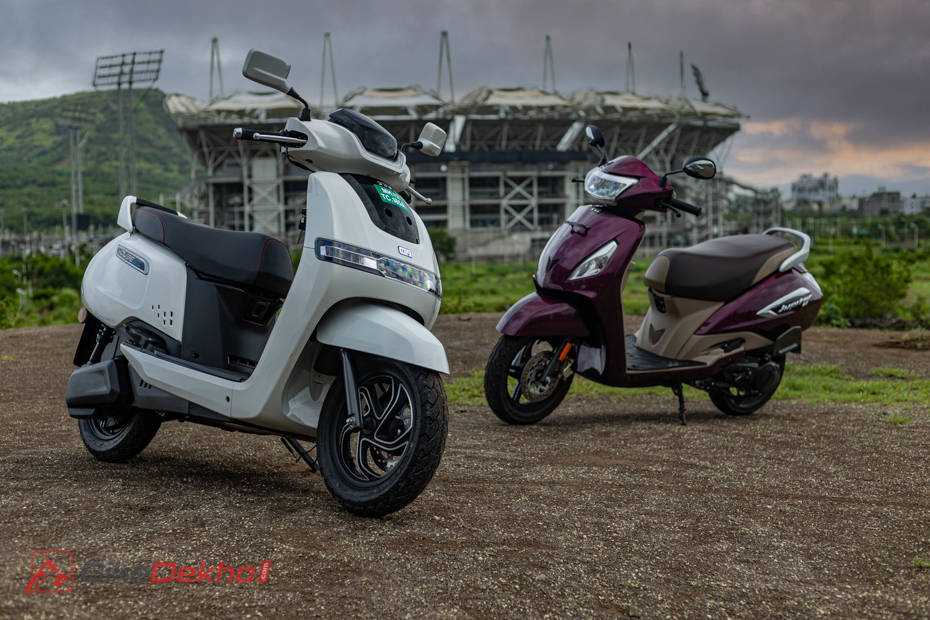TVS iQube Electric vs Jupiter ZX: Performance Numbers Compared
Published On August 29, 2021 15:55 IST
By Gaurav Sadanand for TVS iQube
- 4854 Views
Our test figures will help you understand the exact story

Two different family scooters, under the same roof, catering to two distinct segments. On one side of the ring, we have the TVS iQube, and on the other, the TVS Jupiter. Will the EV triumph in this bout, or will the ICE scooter come up trumps? Here’s a detailed performance comparison that’ll straighten things out once and for all.

The iQube is a tad slower to get off the line, but that’s probably because of the extra 11 kilos it carries. In the dash to 60kmph, it’s 0.7 seconds quicker than the Jupiter but maxes out at 78kmph (true speed). With its power advantage, the Jupiter tops out at around 80kmph but takes a whole 30 seconds to do so.

What’s interesting is the way the iQube delivers its power. The torque is instant, but the meat of the powerband lies in the mid-range, which makes it really usable in city traffic. Despite being the heavier scooter, it's not only quicker but feels more responsive than the TVS Jupiter. The smooth and instant delivery of power also makes quick overtakes an absolute breeze.
 The braking setup on both scooters is the same, so braking distances are almost identical. There’s good feel, bite, and progression from the levers of both scooters. No complaints there.
The braking setup on both scooters is the same, so braking distances are almost identical. There’s good feel, bite, and progression from the levers of both scooters. No complaints there.

Astride the iQube, we were able to extract 83km on a single charge as opposed to TVS’s claimed 75km. So it really boils down to how careful you are with the throttle. Rolling off the throttle on the iQube activates the motor regen, which tops up the battery in small amounts, thereby extending its range.
Most EVs witness a drastic performance drop in limp mode. But that's not the case with the iQube. The scooter lets you access up to 40 per cent (up to 30kmph) of the motor's performance even when the range drops to 1 per cent. Unfortunately, you can’t top up the scooter quickly as it doesn’t come with fast charging. Make sure you always have the portable changer on board just in case you run out. A full charge would take you about seven hours, which is quite a lot of time.

That’s one of the biggest advantages of ICE scooters. You need not worry about running out of fuel as there’s usually a pump almost every five kilometres. And it takes only a matter of minutes to fill up and scoot off. A full tank on the Jupiter should give you well over 280km.
ICE engines do have their perks, but electric scooters like the iQube seem to be closing in the gap rather quickly. Considering improvements in infrastructure and battery tech, EVs are only going to get better from here on. So the iQube, in our opinion, is a great pick.
